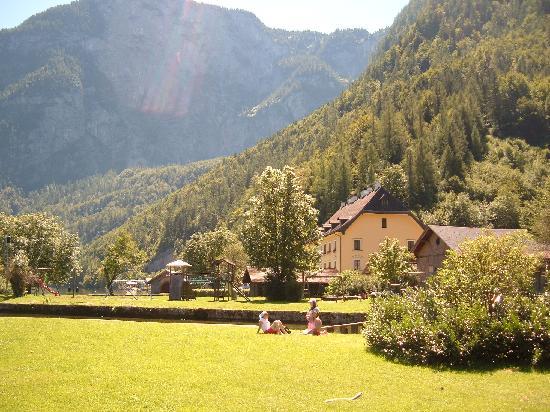Hallstatt Austria
Hallstatt, One Beautiful Town in Austrian Alps
Hallstatt (Hallstatt) is a beautiful and interesting town in Upper Austria. It is located on the southwest coast of the same name near Lake Hallstatt - Dachstein in Saltskamergut (Salzkammergut). Hallstatt is situated about 50 km from Salzburg and about 210 km from Graz. If you go east, you can see three smaller lakes - Altauseer gapes, Toplice gapes and gapes Primer (Altausseer See, Toplitzsee and Grundlsee). North of the town remains Bad Ischl (Bad Ischl). Hallstatt to be reached by water. There is also a road, but it is much longer.
Hallstatt is a small town - can be round about half an hour, but that does not mean that there is not much to see. The beauty of the place comes from both natural areas, and the amazing atmosphere that reigns here. Hallstatt offers excellent conditions for eco- tourism, skiing and cultural tourism. In 1996, Hallstatt is included in the UNESCO list of world cultural heritage.
Hallstatt is surrounded by steep slopes and extremely beautiful mountain region of the Alpine Dachstein. By the 19 th century the town could be reached only by water. The town already has over 1200 history, and in the field of 7000 was extracted and processed salt. No wonder that in Hallstatt is the oldest in the world salt mine. The waters of the lake in January superimposed on the banks of the mountain and so over time it became one of the regions with the highest salt content - 26%.
Salt mines keep equipment for mining and transporting materials from one time and they can see the longest wooden slide in the world, which is accessible to tourists. In 1734 one of the salt deposits, was found perfectly preserved body of a prehistoric miner, from about 300 BC Hence the nickname of the area known as the Austrian man in salt.
He became the common name throughout the area and something like spirit that accompanied the visitors on their journey. Several years before the opening of "Man in Salt" in 1719, close to Hallstatt, in the region Saltskamergut, open "Gallery of Christina" - the oldest salt mine in the world, named after the mother of Maria Theresia - Elizabeth Christina .
Next to the entrance is reached by small railway, which starts and the gallery itself. She is 12 levels deep about 200 meters inside the mountain, but are open to tourists only 7 of them. The temperature here is absolutely natural - all year is 8 degrees Celsius and the humidity is 65% of the guests are giving away special equipment.
Once you dedicate yourself in the mystery of extracting salt and climb up to the last level, the outcome is only one - as already mentioned 64-foot slide (Edlersberg), which can develop up to 30 mph detected by specially installed radar, and then to the exit - by train.
An interesting landmark in Hallstatt are caves in Dahshtaynskiya array - Ice Cave and Cave of the mammoth, which are part of the third largest glacier in the world. They are located at 1586 m altitude and can be reached by lift, followed by about 15 minutes steep climb on foot to the entrance.
From 1913 onwards caves near Hallstatt are accessible to visitors, and they can see beautiful ice domes and sculptures. Created by nature itself, without the intervention of human hands among them can recognize the figure of a girl of animals and many others. others.
Another landmark of the so-called Hallstatt. Glacier , which is located in the valley Ehern. In 1926 glacier is open to tourists. This is actually the highest part of the Dachstein massif. With the funicular lift leading to 2740 m, where solid glass platform opens enchanting panoramic view of the Alpine clacier.
Here is a palace of ice, open a few years ago, which takes visitors into the glacier. All figures in the palace made of ice, and among them are characters from Ice Age animation production figure of the great composer Joseph Haydn. In this landmark restaurant has Hallstatt - view.
Among the landmarks are within the Hallstatt City Museum, housed in the oldest building in Hallstatt (14 century). Prehistoric necropolis is one of the most important places for burials in ancient times, discovered in 1846 this cemetery was given to the late Iron Age in Central Europe.
Interesting in Hallstatt are still Catholic Church and cemetery, dating from 1181 They are a symbol of Hallstatt, respected and loved by all miners and wealthy noble of Salzburg.
Here is some photo gallery of Hallstatt















